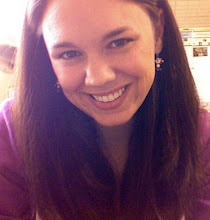
Good evening faithful blog fans, you are in for a treat tonight--not only will I comment on this article by Steven Thorne, but two additional articles (Thanks Sabine!!) for your reading enjoyment. On a personal side note, I couldn't be more excited for 10 days and 21 hours to pass by :)
On with the article..
Reading this article was no piece of cake, as Mr. Thorne likes to use a lot of technical sounding big words, but reading it slowly enough, and more than once helped to understand what he was talking about. What I found most exciting about this article is that it reviewed research that is very similar to some of the things that I would like to research such as: using networked communication tools to increase motivation, participation, more language production overall, more opportunity for language expression, and using cross-modal transfer. The article gave me a plethora of new sources/references to use for my own research and thesis. Also, on page 15 I was happy to read the following sentence, "There is currently very little research on the use of these tools for L2 learning, presenting an obvious opportunity for future work," which is good for me, and makes me feel like my own research could actually be quite useful in this age of new technologies like wikis, blogs, and chat rooms.
The first part of the article focuses on synchronous cmc (real time computer mediated communication), in other words online chat. In a nutshell, so far it seems that the use of chat in language learning environments can be very effective. The article looks at using chat with several different pedagogical methods. The interactionist approach is designed for analysis of negotiation of meaning in oral interaction. In some of the research findings L2 learners found that using chat in pairs prompted an increase in corrective feedback and negotiation in all levels of discourse, in turn prompting learners to produce form-focused modifications to their turns. Another framework that has been used with L2 learners and chat is the sociacultural theory. One study found that L2 learners using chat were able to appropriate the chat environment to produce a personally meaningful, highly intersubjective discourse community.
The next part of the article is about Internet-mediated Intercultural L2 Education, or ICL2E (yikes these acronyms are getting complicated). In this type of learning the Internet is used to move learners away from simulated classroom-based texts and toward actual interaction with expert speakers of the language they are studying. I think this concept is very cool, especially if you were studying a foreign language like French, Spanish, or German. I've been trying to think of how I might be able to use this type of learning with my own class. If my goal is to get them reading and writing in formal English, should i have them participating in some sort of network with English Scholars, lol? Is chatting or conversing via cmc with me enough? Definitely some things I will be considering. The ideal behind intercultural competence is that if a student has it, they will be able to mediate multiple cultural identities and situations (which I feel like I definitely already do going from Aniak, to college, to Oregon to visit my family is just a couple examples). It was interesting reading about the student trying to learn French by instant messaging with a French boy her own age. I found the following statement amusing: "this student required interpersonal mediation, specifically, from a desirable age-peer.." Does that suggest we would all learn better if our teachers were our age and good looking? That's a whole other avenue of research (I think Erin might be interested in looking into it..)

The end of the article focuses on technologies more familiar to me--wikis, blogs, games, and virtual environments. It suggest that not enough research has been done, yet there is a lot of great potential, which I happen to agree with very much. It even suggest social networks such as myspace as a possible learning tool, which I would definitely like to look into. I believe if we can mirror some of these things like social networks, in our teaching students are going to produce more language because these are the type of environments they are used to and feel comforable with. I haven't spent much time looking at virtual environments, and that is another area I'd be interested in exploring to see the possible classroom uses for my students. In the authors final points he makes another comment that I agree with: "Education generally, and language education particularly, will need to accommodate emerging communication tools and their attendant communicative genres that are, and have been for some years, everyday dimensions of competent social and professional activity."
Thorn, S. (2006). New technologies and additional language learning. CALPER Working Paper Series, 1-26
that's all for this especially special article!
adios,
mrm
IAARMRVLVR

























